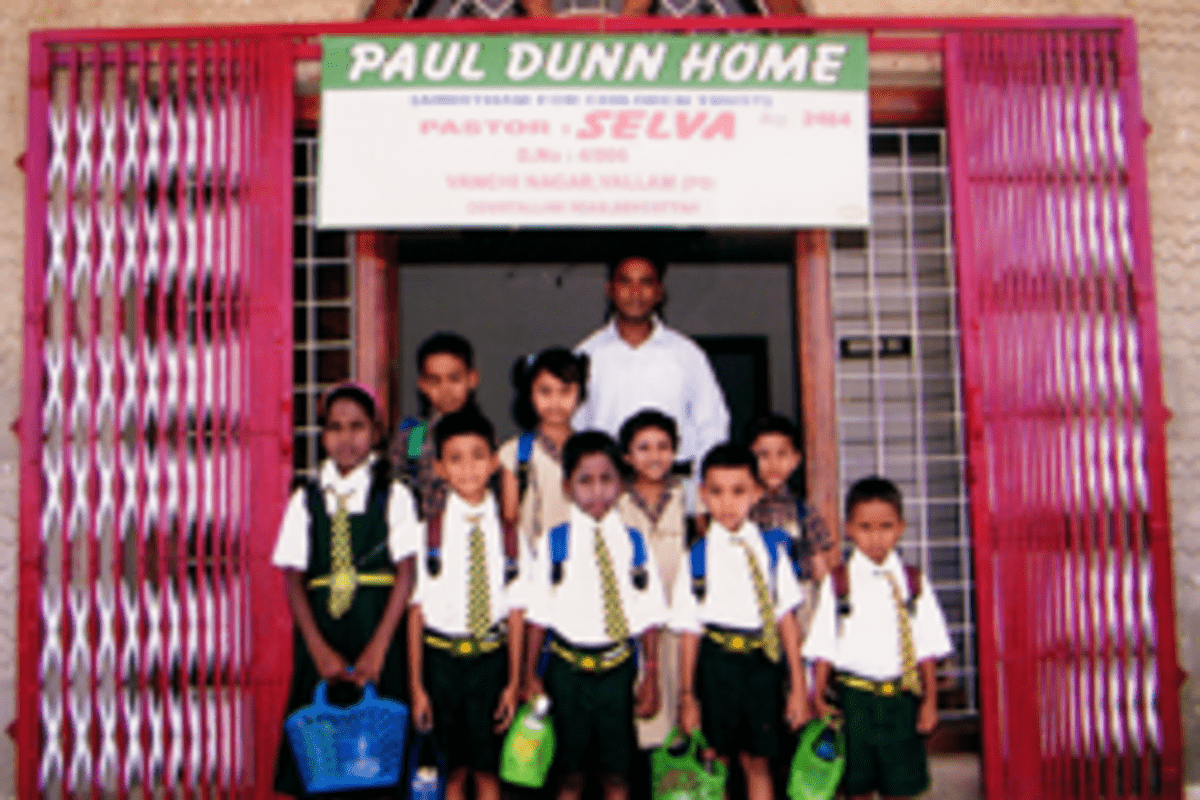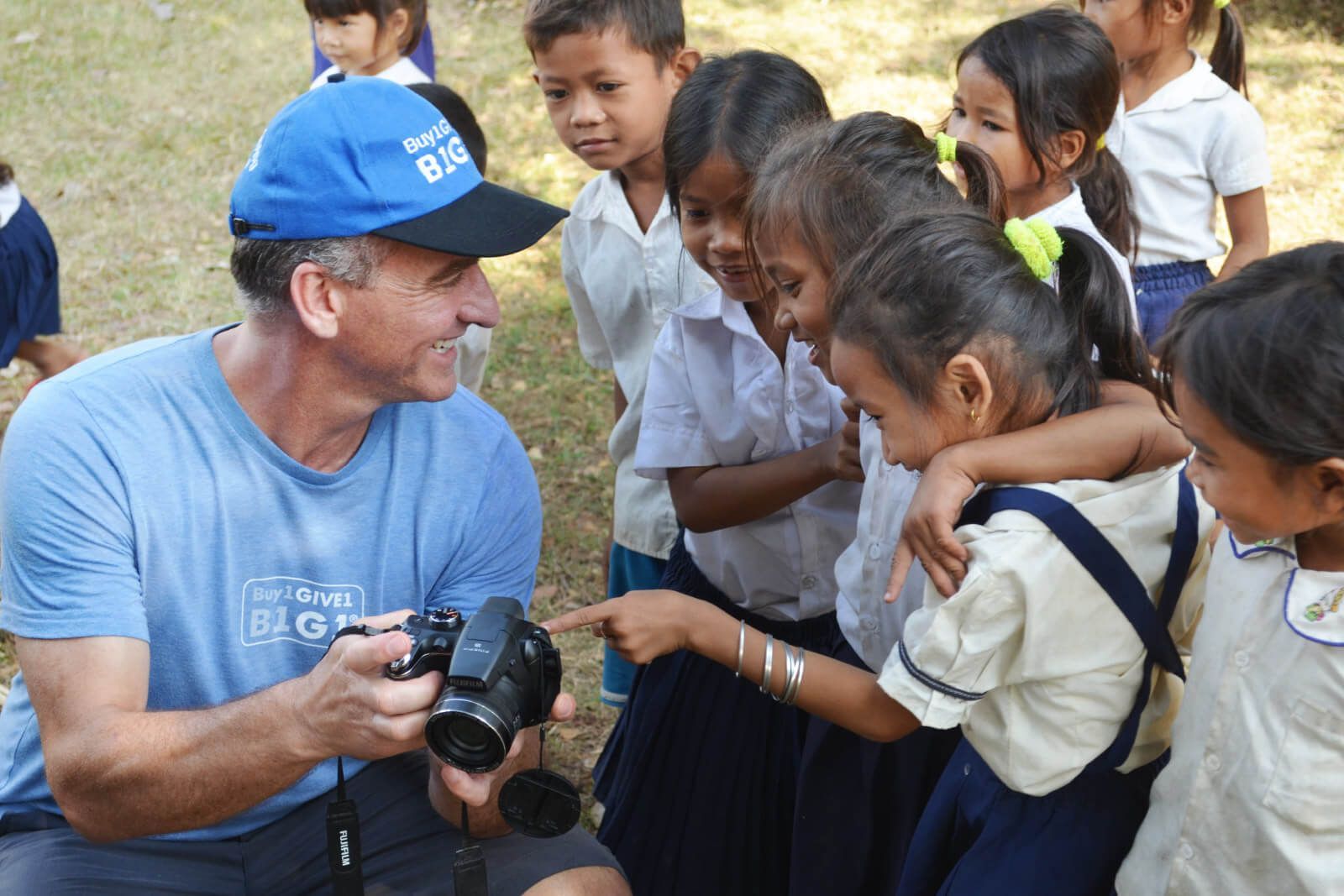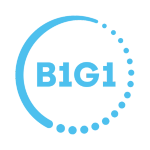SOCIAL STORY: IN CONVERSATION WITH PAUL DUNN, BUSINESS GIVING REIMAGINED
B1G1's chairman Paul dunn was interviewed by SocialStory. YourStory.in launched SocialStory to document and map the thriving social and green entrepreneurship sector in India.
View the original article here
After beginning his career with Hewlett Packard, Paul Dunn, Chairman of Singapore based Buy1GIVE1 (B1G1), transitioned to a marketing position in the accounting industry. In 1981, recognizing his passion for marketing and speaking, he helped form The Results Corporation (TRC), which eventually grew to be a $20 million company serving around 23,000 businesses worldwide. At TRC, Dunn rediscovered the accounting industry and the important role it plays for small and medium size businesses. He adjusted the TRC model and founded Results Accountants’ Systems (RAS) to focus on innovative ways for accountants to create better businesses for their clients. By 2000, RAS was the largest network of high-end accountants in the world, serving 3,500 accounting firms worldwide.
Then, in 2006, a series of events changed the course of Dunn’s life, and eventually led to the founding of B1G1.
In 2006 he was in Bangalore for a coaching program when a friend invited him to dinner. He arrived at the restaurant and was introduced to a man called Pastor Silva. Over dinner, Pastor Silva told Dunn about his own life experiences. One in particular happened when Pastor Silva was on a trip to an island off the coast of India to set up a church in a small community.
In our recent conversation with Dunn, he spoke in Pastor Silva’s words as he recounted that dinner conversation six years ago:
“‘18 months ago, on a Sunday morning, close to Christmas we were at a Sunday school, and we heard this loud noise. So we rushed outside and we saw a wall of water coming towards us,’” Dunn paused, “Now, of course, I knew he was talking about the 2004 tsunami.”
“So I asked him what he did,” continued Dunn, “And he said, ‘Well we had 12 kids in the Sunday school, and I went back in and I said look lets play a game. Let’s run to the high ground and join hands. So we did that. And I stood there with six kids on either side of me and watched the church as it crumbled like a matchbox and, sadly, we watched as the children’s parents were washed away as well.’”
Pastor Silva went on to explain to Dunn that for 18 months he had been trying to find a place to put the children, and had finally succeeded. However, the children still needed food, insurance, schooling, and school books. All of these expenses, the pastor told Dunn, would cost around $3,000.
Knowing something had to be done, Dunn put the money the children needed. Then, four to five weeks later, he received an email from Pastor Silva with some kind words of thanks and four photographs. The first three showed the new home and the surrounding area, the inside with the childnre eating, the side room with the kids and their new school books. Paul explained,
"But it was the fourth picture that changed everything. Because it was a close up of the house, and cross the top, the kids and Pastor Silva had written, " Paul Dunn Home.

Dunn was deeply moved by the photograph, and in that moment that resulted from a serendipitous dinner conversation a few weeks before, he had a sort of epiphany. “Until that point I thought that business was all about having fun and adding value, those were the only two things I knew,” Dunn said. “But at that moment I thought, hang on, there’s something else here. And you know how that is, when insights like that all of a sudden make you see the world in a different way.”
Three months later, at a workshop in Bali, Dunn met Masami Sato, who introduced him to a business model that was based on the idea that for every product sold, a portion of the profits goes toward providing something for someone in need. “Someone said, ‘I’ve heard of buy one get one, but that’s buy one give one,’” Dunn recounted. Dunn and Sato began playing with this notion. The idea, for instance, that when you buy a new television because you want better picture clarity, someone who cannot see receives the gift of sight; the idea that when you buy a cup of coffee a child somewhere gets a cup of water.
Today, Buy1GIVE1 serves as a platform for businesses to realize what Paul Dunn and Masami Sato conceptualized back in Bali. In becoming a B1G1 company, an enterprise allocates a fraction of their profits toward a project of their choosing. This could be anything from a café owner providing drinking water for every cup of coffee sold, to an author that plants a tree every time he sells a book. The company has the ability to choose a cause that resonates with its business and its customers. At only about a dollar a day, and with virtually no change in operations, B1G1 makes it simple for small to medium size companies to make a meaningful difference in the lives of others.
“If you take a country like India, or any so-called rich country, what you’ll find is that 70% of the economy of the country is not powered by the major corporates, it’s actually powered by small to medium scale enterprises,” said Dunn. “What’s interesting is if you think about the term ‘corporate social responsibility,’ which I really don’t like because I think it’s a disempowering term, the root word ‘corporate’ turns off the small to medium scale business person. And yet internally [SMEs] know that they want to give back, because it’s who we are, its built into our DNA.”
By charging a nominal price, B1G1 enables these SMEs to do just that. Communicating this vision to the SMEs, however, has been one of B1G1’s biggest challenges.
The moment you talk about giving, and then you say, ‘oh, by the way, you have to belong to B1G1,’ that ‘one-dollar-a-day thing’ if you will, some people say, ‘hold on you want me to pay in order to give?’” Dunn explained. “What they don’t realize is that when they give, the amount that actually ends up with the beneficiary is in some cases around 37% of what was donated.
But we tend not to think about this because that’s the way the world is. So that’s why we say, at B1G1, it’s business giving reimagined. It’s like, okay, sweep away everything you knew about charity and business giving, and let’s replace it with something that you might find is a much smarter way of doing it, a way that is totally transparent and sustainable. Our challenge is communicating that message, and I think we’re getting better at it.”
Their nonprofit division, B1G1 Giving, allows individuals, rather than companies, to dedicate themselves to a project that resonates with them by linking their personal lifestyles and activities with small donations. By setting up a “giving journal” on the B1G1 website, one can see to it that, for instance, for every cup of coffee he or she drinks, an extra US $0.01 will be spent to provide three liters of water to someone in need.
Today B1G1 serves over 600 projects around the world in 30 different countries, and has facilitated almost 19 million microgiving activities. While for many this number may seem immense, for Dunn it is not. “This is a small, small part of what actually could be happening. [We think] that in the future more and more businesses in the SME sector will want a simple way of doing good, and B1G1 can be that platform.”
ON SOCIAL ENTERPRISE AND SOCIAL ENTREPRENEURSHIP
Paul Dunn’s transformation from a computer guy, to a marketer, to a speaker, and finally to a social entrepreneur has left him with a deep understanding of how social enterprise fits into the greater business environment. Realizing this, we asked him to give us some insights into this emerging trend of business with a social conscience.

“If you look at the US in the past 12 years alone, the number of charities has more than doubled,” explained Dunn. “You would think that if the number of charities has doubled, we would now have half the problems. This is clearly not true.”
“We see that people are moved to do good, but they do it without asking a crucial question: when I start my project, what do I do when the funding stops? What do I do if there is no funding? The moment you ask those two questions you realize that [starting a social enterprise] is not any different than starting a ‘normal’ business. Why should it be? Why should we not be using all the skills that people use to build great businesses? Why on earth should this be different just because there happens to be a social piece? The question then is how can we do it so that we create something great, that people are attracted to, something that is really sustainable in every sense of the word. Sustainable in as much as it is providing fantastic value for its customers. The more it continues to do that, the more successful it will be.”
Dunn left us with four points of advice for social entrepreneurs. First, increase the number of customers, focusing not on the mass audience per say but rather on the specific kind of customer that you attract. Second, increase the frequency at which you interact with these customers; in other words, keep the customers coming back. Third, increase the average value of each transaction. According to Dunn, social enterprises too often underprice themselves either because they do not fully understand the true value of their product or because they are not doing enough to communicate this value to consumers. Fourth, have fun and enjoy what you do.
Paul Dunn believes deeply in the growing trend of individuals and businesses taking on a social cause. He established B1G1 to facilitate and perpetuate this trend, believing that the more these businesses recognize the power they have to change lives, the less necessary the distinction between “entrepreneurs” and “social entrepreneurs” will become. Conversely, the more we continue to make this distinction, to hold social enterprise as its own category rather than business as usual, the more problems we are likely to have.
Visit their website to make your company a Buy1GIVE1 company.
